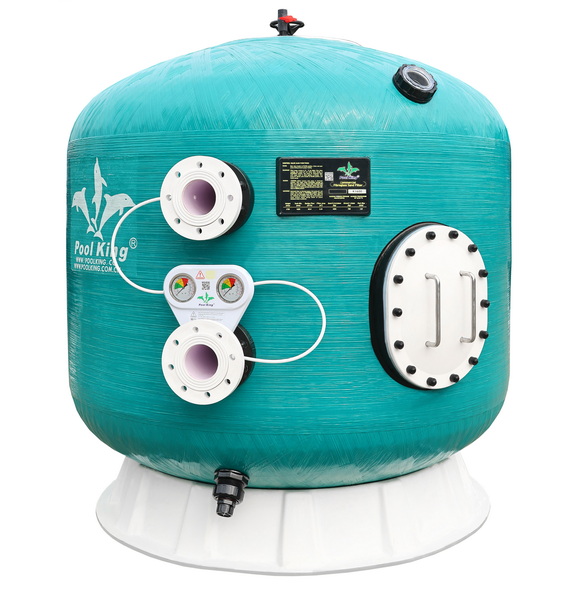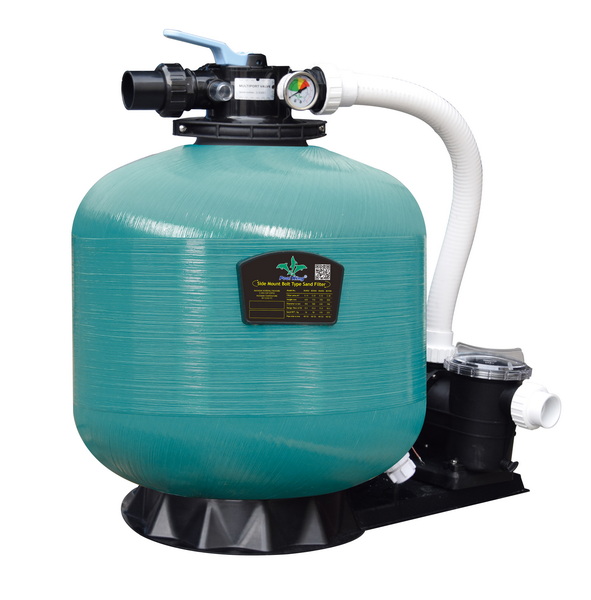Views: 222 Author: Tina Publish Time: 2025-07-14 Origin: Site








Content Menu
● Why Cleaning Your Pool Filter Cartridge Matters
● Understanding Pool Filter Cartridges
● Factors Affecting Cleaning Frequency
● How Often Should You Clean Your Pool Filter Cartridge?
● Signs Your Cartridge Needs Cleaning
● Step-by-Step Guide to Cleaning a Pool Filter Cartridge
● Deep Cleaning and Annual Maintenance
● How to Extend the Life of Your Cartridge
● Troubleshooting Pool Filter Issues
● Environmental Considerations
>> 1. How do I know when to clean my pool filter cartridge?
>> 2. What happens if I don't clean my pool filter cartridge regularly?
>> 3. Can I use a pressure washer to clean my cartridge?
>> 4. How often should I replace my pool filter cartridge?
>> 5. What cleaning solutions are safe for filter cartridges?
A clean pool filter cartridge is the heart of a healthy swimming pool. Without regular cleaning, your pool water can become cloudy, your equipment may suffer, and your swimming experience will be far from ideal. This article will arm you with all the knowledge you need to keep your pool filter cartridge in top shape, ensuring a safe and enjoyable swimming environment for everyone.

A pool filter cartridge traps dirt, debris, oils, and other contaminants, keeping your pool water clear and safe. Over time, these particles accumulate and clog the filter, reducing its efficiency and putting extra strain on your pool's pump and filtration system. Regular cleaning ensures:
- Crystal-clear water
- Efficient filtration
- Longer equipment lifespan
- Lower maintenance costs
- A safer swimming environment
Neglecting this simple maintenance task can result in increased energy consumption, expensive repairs, and even health risks due to bacteria and algae buildup.
Pool filter cartridges are made from pleated polyester or similar materials. Their design maximizes surface area, allowing them to trap fine particles while maintaining water flow. Cartridges are housed in a filter canister and are easy to remove for cleaning.
- Cartridge Filters: Most common in residential pools, easy to maintain, and provide excellent filtration for small to medium debris.
- Sand Filters: Use sand to trap debris, require periodic backwashing, and are suitable for larger pools or commercial settings.
- Diatomaceous Earth (DE) Filters: Use DE powder, offer superior filtration but need more maintenance and careful handling of the DE material.
Each filter type has its own cleaning and maintenance requirements, but cartridge filters are favored for their ease of use and effective performance in most home pools.
The ideal cleaning schedule for your pool filter cartridge depends on several factors:
- Pool Usage: More swimmers mean more debris and contaminants.
- Environment: Pools near trees, plants, or in dusty areas require more frequent cleaning.
- Weather: Heavy rains, storms, or wind can introduce extra debris into the pool.
- Water Chemistry: Poor chemical balance can lead to algae or scale, clogging the filter faster.
- Type and Size of Cartridge: Larger or higher-quality cartridges may last longer between cleanings.
- Presence of Pets: If pets swim in the pool, fur and dander can clog the filter more quickly.
- Every 1 to 3 Months: Most experts recommend cleaning your cartridge filter every 1 to 3 months during the swimming season. Monthly cleaning is ideal for pools with heavy use or lots of debris.
- When Pressure Increases: Check the filter pressure gauge. If the pressure rises 8–10 PSI above the normal operating level, it's time to clean the cartridge.
- After Heavy Use or Storms: Clean the filter after pool parties, storms, or algae outbreaks.
- Once a Year: Soak your cartridge in a cleaning solution overnight to remove oils and stubborn buildup that regular rinsing cannot remove.
- Algae Outbreaks: Clean the cartridge immediately after treating algae to remove dead organic matter.
- Construction or Landscaping Nearby: Increased dust and debris may require more frequent cleaning.
- Cloudy or dirty pool water
- Reduced water flow from jets
- Increased pressure on the filter gauge
- Visible debris or discoloration on the cartridge
- Pool equipment (pump) working harder or making unusual noises
- Pool cleaner or skimmer not working efficiently
If you notice any of these signs, inspect and clean your cartridge promptly to prevent further issues.

Always switch off the pump and any automatic timers before starting.
Open the air relief valve to release pressure from the filter system.
Open the filter canister and carefully remove the cartridge.
Check for tears, cracks, or excessive wear. Replace if damaged.
Use a garden hose with a spray nozzle to rinse debris from the pleats. Work from top to bottom and rotate the cartridge to ensure all sides are clean.
For stubborn dirt or oils, soak the cartridge in a commercial filter cleaner or a mixture of water and mild detergent. Soak for at least 6 hours or overnight.
Rinse off all cleaning agents to prevent foaming or water contamination.
Replace the cartridge in the canister, secure the lid, and restart the pump. Close the air relief valve once water flows steadily.
After cleaning, monitor the pressure gauge and water clarity to ensure the filter is operating efficiently.
Once a year, perform a deep clean by soaking the cartridge overnight in a cleaning solution. This removes oils, lotions, and minerals that regular rinsing cannot. Always rinse thoroughly before reinstalling.
For best results, alternate between two cartridges: while one is soaking, the other can be used in the pool. This rotation extends the life of both cartridges and ensures your pool is always protected.
- Using a pressure washer (can damage pleats)
- Skipping regular cleaning
- Reinstalling a wet or soapy cartridge
- Ignoring pressure gauge readings
- Neglecting to inspect for damage
- Using harsh or incompatible cleaning chemicals
Proper care and attention to these details will help you avoid costly repairs and maintain optimal filtration.
- Clean regularly according to usage and environment
- Rinse after heavy use or storms
- Use skimmer socks or pre-filters to trap larger debris
- Maintain proper pool chemistry
- Store spare cartridges and rotate them
- Avoid direct sunlight when storing spare cartridges to prevent material degradation
If your pool water remains cloudy or the pressure gauge stays high after cleaning, check for:
- Damaged or worn-out cartridge (replace if needed)
- Incorrect installation
- Clogged or dirty pump basket
- Poor water chemistry
- Air leaks in the filter system
- Blockages in pool plumbing
Addressing these issues promptly can save you time, money, and frustration.
- Record Keeping: Keep a maintenance log to track cleaning dates, pressure readings, and any issues. This helps identify patterns and optimize your cleaning schedule.
- Cartridge Rotation: Invest in a second cartridge to rotate during deep cleanings, reducing downtime and extending cartridge life.
- Filter Cleaning Tools: Specialized filter cleaning combs or brushes can help remove stubborn debris from pleats without damaging the material.
- Water Level Management: Maintain proper water levels to ensure optimal filter operation and avoid air entering the system.
- Water Conservation: Use a hose nozzle that shuts off automatically to minimize water waste during cleaning.
- Eco-Friendly Cleaners: Choose biodegradable or environmentally safe filter cleaning solutions.
- Debris Management: Regularly skim and vacuum the pool to reduce the load on your filter cartridge and minimize cleaning frequency.
Regular cleaning of your pool filter cartridge is essential for maintaining clear, healthy water and ensuring your pool equipment runs efficiently. By following a consistent cleaning schedule, monitoring pressure levels, and performing annual deep cleans, you can extend the life of your cartridge and enjoy a sparkling pool all season long. Remember, a little maintenance goes a long way in protecting your investment and providing a safe swimming environment. With the right knowledge and routine, pool care becomes simple and rewarding.

Monitor your filter's pressure gauge. When it reads 8–10 PSI above the normal level, it's time to clean the cartridge. Also, clean after heavy use, storms, or if the water becomes cloudy.
A neglected cartridge leads to cloudy water, poor filtration, increased strain on the pump, and potential equipment damage. It can also promote algae growth and unsafe swimming conditions.
No, using a pressure washer can damage the pleats and reduce filtration efficiency. Always use a garden hose with moderate pressure.
Most cartridges last 1–2 years with proper care. Replace sooner if you notice tears, cracks, or persistent water quality issues.
Use commercial pool filter cleaners or a mild detergent solution. Avoid harsh chemicals that can damage the cartridge material.
